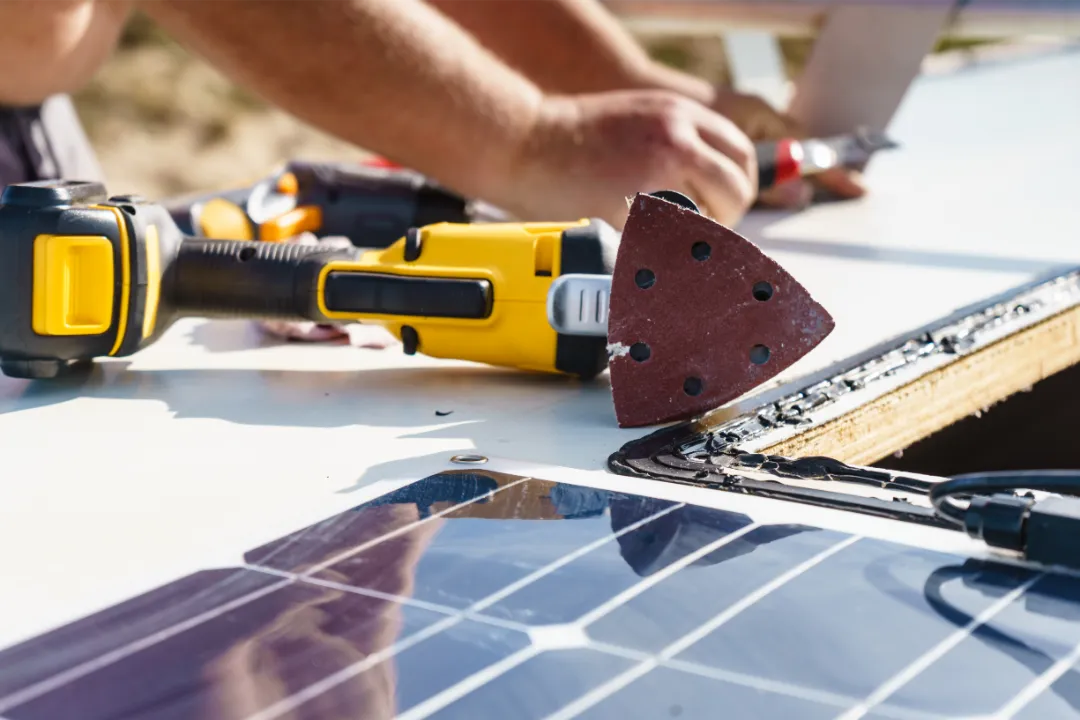PALM HARBOR SOLAR PROS BLOG
Insights from Our Solar Energy Journey

Bright Ideas for a Sustainable Future: Incorporating Solar Energy in Urban Planning
Did you know that by harnessing just 0.3% of the sun's energy that reaches the Earth, we could power the entire world? It's a staggering statistic that underscores the immense potential of solar energy in creating a sustainable future. As urban areas continue to expand, incorporating solar energy in urban planning has become crucial in reducing our dependence on fossil fuels and mitigating the impacts of climate change. In this discussion, we will explore some bright ideas for integrating solar energy into our cities, from rooftop installations to solar-powered public transportation. So, let's explore how solar energy can revolutionize urban planning and pave the way towards a greener and more sustainable future.
Solar Energy as a Key Element
Solar energy plays a crucial role in modern urban planning and is considered a key element for sustainable development. The integration of solar energy in various sectors, such as agriculture and water treatment, has proven to be highly beneficial.
In agriculture, solar energy is used to power irrigation systems and provide electricity for farm operations. By utilizing solar panels, farmers can generate electricity to run pumps, reducing their reliance on fossil fuels and decreasing their carbon footprint. Solar-powered irrigation systems also help conserve water by optimizing its usage and reducing water waste. This not only promotes sustainable farming practices but also helps improve crop yields and increase food production.
Solar energy is also extensively used in water treatment processes, specifically in desalination and purification systems. Solar-powered desalination plants harness the sun's energy to convert saltwater into fresh water, addressing water scarcity issues in coastal areas. Additionally, solar energy is utilized in water purification systems to remove contaminants and make water safe for consumption. This reduces the reliance on traditional energy sources and promotes clean and sustainable water management practices.
Rooftop Solar Installations
With the successful integration of solar energy in various sectors, such as agriculture and water treatment, it is imperative to explore the implementation of rooftop solar installations in urban areas. Rooftop solar incentives and financing options play a crucial role in encouraging individuals and businesses to adopt this renewable energy source.
Rooftop solar installations have the potential to revolutionize urban energy consumption. By harnessing the power of the sun, these installations can generate clean and sustainable electricity, reducing reliance on fossil fuels and lowering carbon emissions. However, one of the main barriers to widespread adoption is the upfront cost of installation.
To address this issue, governments and organizations have introduced rooftop solar incentives and financing options. These incentives can include tax credits, grants, and rebates, making solar installations more affordable for homeowners and businesses. Additionally, financing options such as solar leases and power purchase agreements allow individuals to install solar panels with little or no upfront cost, paying for the system over time through monthly payments or through the purchase of the generated electricity.
Solar-Powered Street Lighting
We have seen a significant increase in the adoption of solar-powered street lighting in urban areas. This trend is driven by the growing recognition of the benefits of solar energy and the need for sustainable solutions in urban planning. Solar-powered street lighting offers several advantages over traditional grid-powered lighting systems.
One key advantage is the integration with smart grids. Solar-powered street lights can be connected to a smart grid, allowing for efficient management of energy consumption. This integration enables better monitoring and control of lighting levels, resulting in optimized energy usage and cost savings. Additionally, solar-powered street lights can be equipped with sensors and smart controls to adjust lighting levels based on ambient light conditions, further enhancing energy efficiency.
Another advantage is the cost-effective implementation of solar-powered street lighting. Traditional grid-powered street lights require extensive infrastructure, including underground cables and transformers. In contrast, solar-powered street lights are standalone systems that do not require complex wiring. This simplifies installation and reduces upfront costs. Furthermore, solar-powered street lights have lower operational costs as they do not rely on grid electricity, reducing ongoing energy expenses.
Solar-Powered Public Transportation
Public transportation systems are increasingly incorporating solar power as a sustainable and cost-effective energy source. As urban areas continue to grapple with issues of traffic congestion and air pollution, solar-powered public transportation offers a promising solution. One innovative example of this is the use of solar-powered bicycles. These bikes are equipped with solar panels that convert sunlight into electricity to power the bike's motor, allowing for a more efficient and environmentally friendly mode of transportation. Additionally, solar charging stations for electric vehicles are being implemented in various cities. These stations use solar panels to generate clean energy, which can then be used to charge electric buses and trains. Not only do these charging stations reduce the reliance on fossil fuels, but they also help to alleviate the strain on the electrical grid. By harnessing the power of the sun, public transportation systems can become more sustainable and cost-effective, benefiting both the environment and the communities they serve.
Solar Energy in Building Design
One effective way to incorporate solar energy into urban planning is through the design of buildings. Solar energy integration in building design can significantly contribute to reducing greenhouse gas emissions and reliance on non-renewable energy sources. By incorporating solar panels or solar thermal systems into the design, buildings can generate clean and sustainable energy to power their operations.
Solar energy integration in building design not only helps in reducing carbon footprint but also enhances energy efficiency. Buildings can be designed to maximize solar exposure and utilize natural daylight, thereby reducing the need for artificial lighting and decreasing energy consumption. Additionally, strategic placement of windows, insulation, and shading devices can optimize the use of solar energy for heating and cooling purposes, minimizing the reliance on traditional HVAC systems.
To ensure solar energy efficiency, architects and designers need to consider factors such as building orientation, materials, and layout during the design phase. They should prioritize the incorporation of solar panels or solar collectors in areas that receive the most sunlight and avoid shading from surrounding buildings or obstructions. Moreover, solar energy storage systems can be integrated into building designs to store excess energy for later use, increasing overall efficiency.
Community Solar Projects
Community solar projects are an increasingly popular and effective way to expand access to solar energy in urban areas. These projects not only allow individuals and businesses to benefit from clean and renewable energy, but they also promote community engagement and financial viability.
Community engagement is a key aspect of successful solar projects. By involving the community in the planning and decision-making processes, projects can ensure that the needs and preferences of local residents are taken into account. This helps to build trust and support for the project, making it more likely to succeed in the long term.
Financial viability is another important consideration for community solar projects. While the initial costs of installing solar panels can be high, the long-term savings and benefits are significant. By pooling resources and sharing the costs, community solar projects can be more financially feasible for participants. Additionally, these projects often have the potential to generate revenue through the sale of excess energy back to the grid, further enhancing their financial sustainability.
Conclusion
In conclusion, incorporating solar energy in urban planning is a bright idea for a sustainable future. By implementing rooftop solar installations, solar-powered street lighting, and solar-powered public transportation, we can greatly reduce our reliance on fossil fuels and decrease carbon emissions. Additionally, integrating solar energy in building design and supporting community solar projects can further enhance the transition to clean energy sources. With these innovative solutions, we can create more environmentally-friendly and resilient cities for generations to come.
Connect With Us
Locations We Serve:
© Copyright 2026 Palm Harbor Solar Pros. All Rights Reserved.
Terms & Conditions | Privacy Policy

